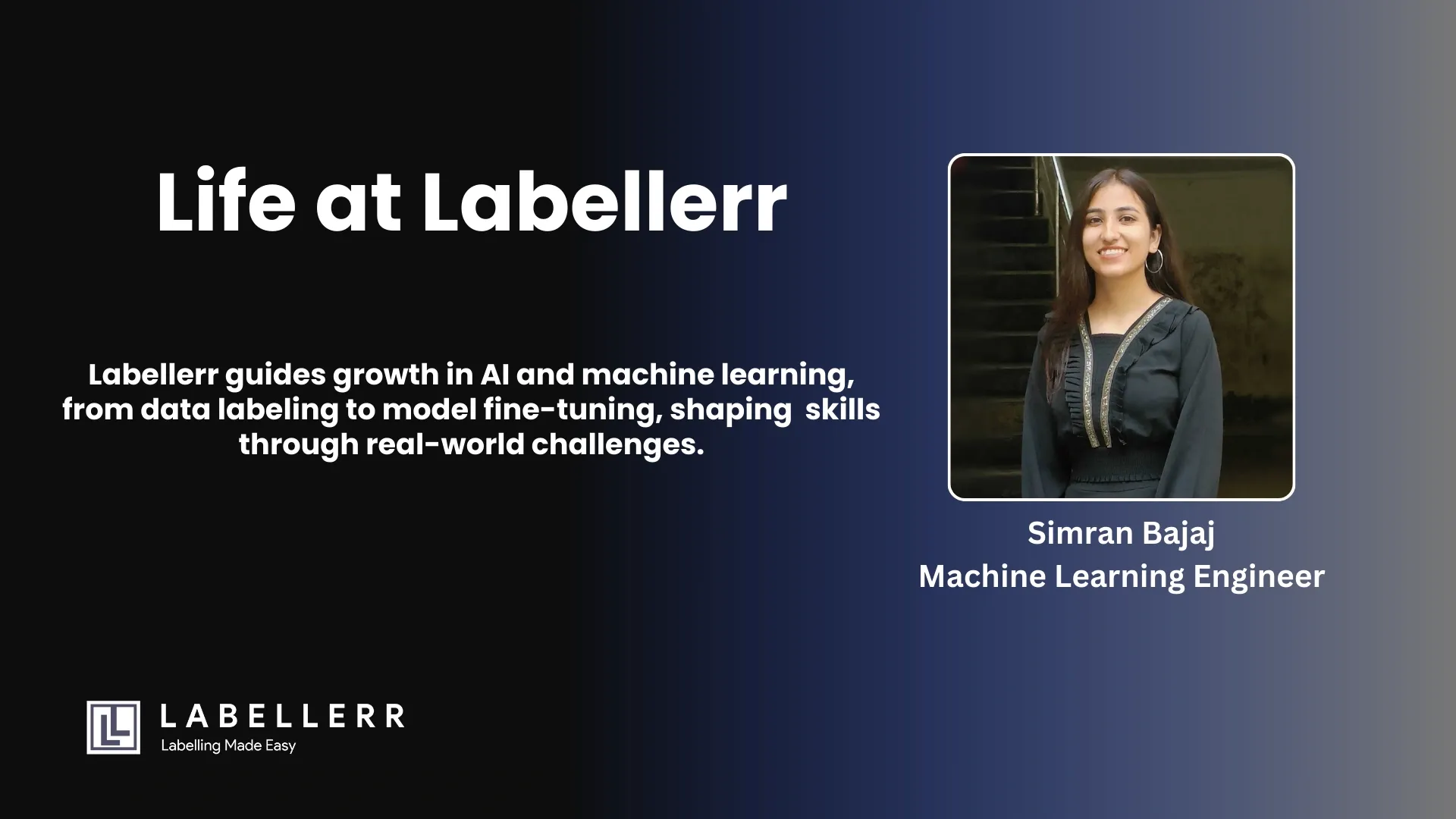Working at Labellerr: My Story As An ML Intern

Ever since I started my journey in engineering, I had this vivid picture of what life would be like after graduation, being independent, working on projects that not only challenged me but also had real-world impact.
I imagined myself tackling problems that required both creativity and technical skill. As I progressed through my coursework, one field began to stand out to me: artificial intelligence, especially computer vision.
The possibilities of AI fascinated me, from self-driving cars to robots that could assist with everyday tasks. I found myself drawn to the idea that machines could learn to interpret the world around them and that I could be a part of building that future.
That’s when I got the opportunity to intern at Labellerr , a startup focused on data labeling for machine learning and deep learning models, which ranks among the top 10 data labeling tools globally.
I had some preconceived notions about what it would be like working at a startup, especially one so closely tied to the heart of AI development.
I thought it would be a fast-paced environment where cutting-edge technologies were being deployed daily and where I would finally get to apply everything I had learned in a meaningful way.
Little did I know, this experience would be so much more than that—it would teach me the realities of working with data, building practical solutions, and understanding the intricacies of machine learning , deep learning, and computer vision from the ground up.
Over 80% of the time and effort in AI development is spent on preparing, cleaning, and labeling the data that these models learn from. This process is essential, though often time-consuming and tedious.
Each time a new version of the model is released, it’s backed by high-quality, carefully curated, and labeled data.
Techniques like Reinforcement Learning from Human Feedback (RLHF) also play a key role, where human input is used to fine-tune the model’s responses, guiding it toward more accurate behavior.
In fact, even detailed instructions provided during training can be seen as a form of data labeling, shaping how the model understands and processes information.
It’s this cycle of refining data and improving the model that drives the progress you see with each new update.
The First Week: Expectation vs Reality
On my first day, I came in full of excitement, thinking, “Today, I’m going to build machine learning models!” Boy, was I in for a surprise.
The reality hit me as I started setting up my environment and running into technical hurdles. From installation errors to configuration issues to the dreaded "Google it".
The initial excitement was quickly replaced with endless troubleshooting sessions. Actually, Google-ing something truly is a skill. Some people are much better and faster at finding more accurate results than others.
After spending a week trying to set up the environment, I realized this was not going to be a cakewalk. Setting up the infrastructure was just the beginning.
Research and the Turning Point
Then came the more intellectually challenging part—research! I was assigned a research paper to dive into.
For anyone interested in computer vision, you should definitely check out CVPR (Conference on Computer Vision and Pattern Recognition)—it’s a goldmine for research papers.
Advice for Aspiring AI Enthusiasts
Here’s a piece of advice: You will be overwhelmed at first. But that’s okay! Pick one problem, one paper, or one task, and really spend time on it. Don’t get bogged down by initial errors or roadblocks.
The key is to stay focused and keep pushing through. If you hit a wall, go around it, over it, or break it down—but don’t stop.
Now, let me walk you through some of the tasks I worked on at Labellerr.
- Understanding research papers and finding insights: During my time at Labellerr, I spent considerable effort diving into complex research papers.
I thoroughly analyzed the methodologies, frameworks, and findings presented, extracting key insights that could be applied to real-world problems.
This process was crucial in bridging the gap between academic concepts and practical implementations. - Debugging errors while setting up the model for inference: A significant part of my journey involved troubleshooting issues during the model setup.
From dependency conflicts to configuration mismatches, I systematically debugged errors at every step, ensuring the model was ready for smooth inference.
This sharpened my problem-solving skills and deepened my understanding of the model architecture. - Fine-tuning the models: I worked on fine-tuning pre-trained models to adapt them to specific tasks.
This involved optimizing hyperparameters, adjusting learning rates, and experimenting with different datasets.
The fine-tuning process significantly improved model performance and tailored it to meet the project’s requirements.
Next something I am getting into is understanding customer calls and jobs to be done framework, which is very important to align research with execution and value and building models that matter for production and customers
In these six weeks at Labellerr, I’ve grown both technically and personally. The experience was a rollercoaster of challenges, but the lessons I learned will stay with me for a long time.
For those of you stepping into the AI and computer vision space, know that the journey may be tough, but it’s rewarding in the end.
If you ever have questions or just want to discuss something, feel free to reach out. I’m always open to connecting on LinkedIn.
keep learning and keep exploring!
Connect with me on LinkedIn here

Simplify Your Data Annotation Workflow With Proven Strategies
Download the Free Guide

